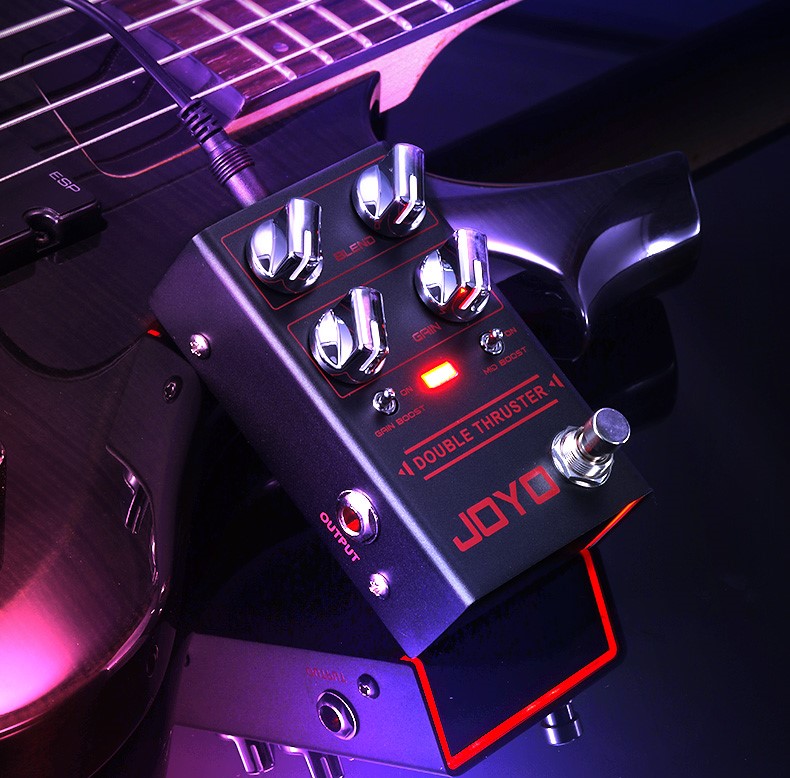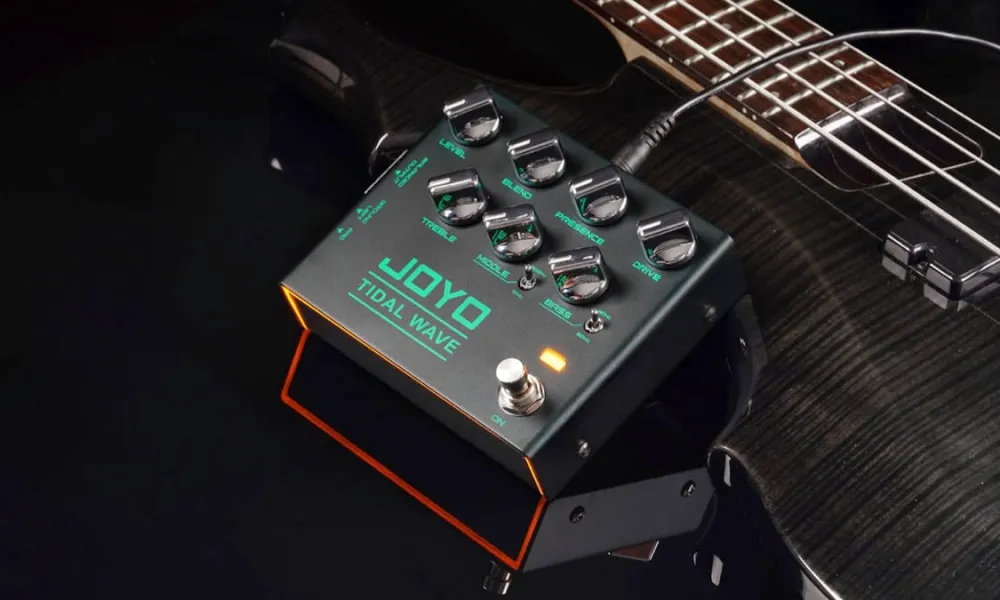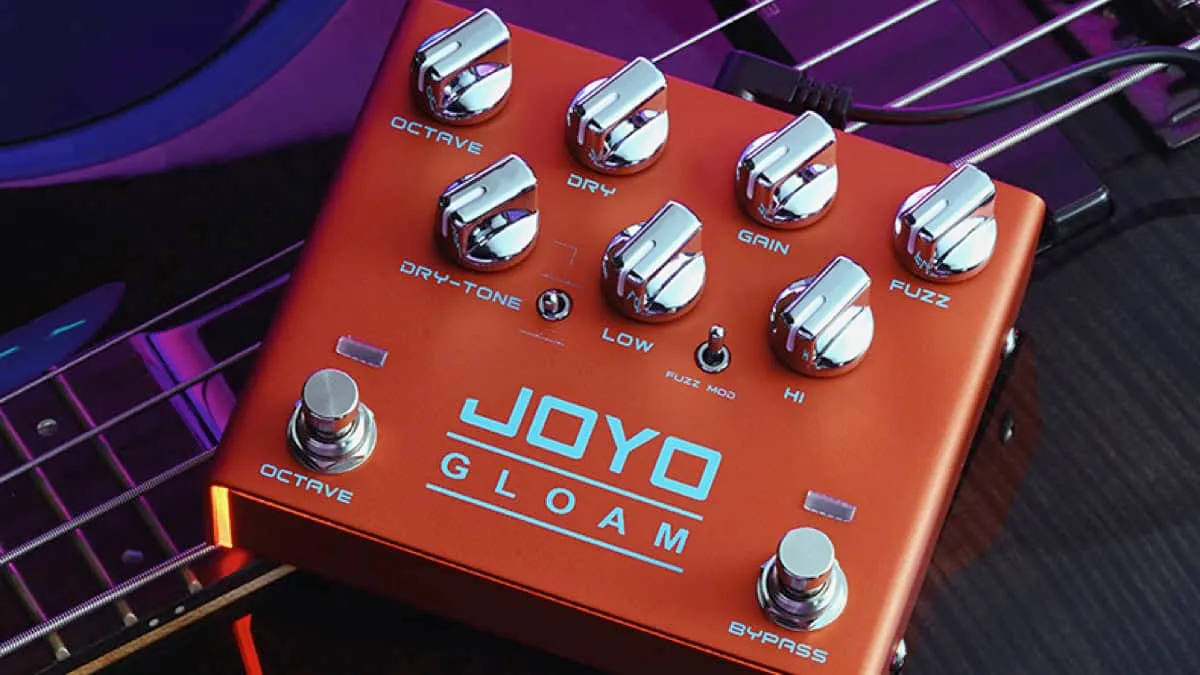Sub-Octave Fuzz Pedal for Bass Players The Joyo Gloam represents a bold entry into the world of bass effects, specifically targeting players seeking the rich textures of fuzz combined with the deep power of sub-octave synthesis. This review delves into the pedal’s features, performance, and its unique place in the lineage of bass pedals, examining why combining fuzz and sub-octave effects in one unit is a game-changer for many bass players. Verdict – Joyo Gloam Pedal Check the price on Amazon –> Disclaimer: This pedal was kindly provided by Joyo for the purpose of this review. However, this does not influence our opinion or the content of our review. We strive to provide honest, unbiased, and accurate assessments to ensure that our readers receive truthful and helpful information. A Brief History: Sub-Octave Pedals in Bass Guitar Sub-octave effects have long been a staple for bassists looking to expand their sonic range. Pioneered by pedals like the Boss OC-2 and later refined by models such as the EHX POG series, sub-octave effects create a lower-pitched signal that complements the original tone. These pedals found their niche in everything from funk and R&B to experimental and synth-heavy genres, offering bassists the ability to emulate keyboard bass or create earth-shaking lows. Fuzz, on the other hand, has been a cornerstone of rock and metal bass tones, from the raw aggression of the Big Muff to boutique offerings catering to modern players. Combining fuzz and sub-octave effects isn’t a new concept—pedals like the EHX Bass Microsynth and Darkglass Duality explored this territory—but the Joyo Gloam’s implementation brings a fresh approach at an accessible price point. Specifications and Controls Specifications: Control Layout: The Gloam features a dual-circuit design, offering extensive control over both fuzz and sub-octave channels: Sub-Octave Section: Fuzz Section: Performance and Sound Dual Circuits: Synergy and Limitations The Joyo Gloam’s standout feature is its dual-circuit design, allowing independent control over the sub-octave and fuzz channels. This flexibility opens a vast range of sonic possibilities, from subtle harmonic enhancement to all-out synth-inspired chaos. However, the pedal’s design includes a notable limitation: the sub-octave circuit cannot be engaged independently of the fuzz circuit. While you can effectively “solo” the sub-octave by turning down the fuzz controls, it would have been preferable to allow completely separate operation. Despite this, the integration of these effects in one unit simplifies pedalboard setups and provides a cohesive tonal synergy that’s difficult to achieve with separate pedals. Sub-Octave Circuit The sub-octave channel excels in delivering deep, balanced tones that blend well with both clean and fuzz signals. The inclusion of a dry tone frequency switch offers added flexibility, enabling players to emphasize different frequency ranges for the clean signal. This can be particularly useful in live settings where articulation and clarity are paramount. The sub-octave sound itself is reminiscent of classic analog octavers but with a slightly more modern, polished edge—perfect for bassists who want a versatile and reliable low-end boost. Fuzz Circuit The fuzz circuit provides a dynamic and rich tonal palette. The two-band EQ (bass and treble) is particularly effective, allowing you to sculpt the fuzz’s tonal character to sit perfectly in a mix. The Gain and Fuzz Intensity controls offer a wide range of distortion, from subtle overdrive to searing, aggressive fuzz. However, not everything is perfect; one of the two fuzz modes feels less practical and somewhat uninspired compared to the other, which delivers a thick, satisfying tone suitable for a variety of genres. Combined Effect: Synth-Like Textures When used together, the sub-octave and fuzz circuits unlock the Gloam’s full potential. The sub-octave’s precision and the fuzz’s raw power combine to create textures that evoke classic analog synths, reminiscent of Moog basslines. This makes the Gloam an ideal choice for bassists in electronic, experimental, or progressive genres, as well as those looking to push the boundaries of traditional bass tones. Why Combine Sub-Octave and Fuzz? For bassists, combining sub-octave and fuzz effects is more than a gimmick—it’s a practical solution for achieving massive, layered tones. Sub-octave effects add weight and depth, ensuring the bass remains grounded even in dense mixes, while fuzz introduces harmonic richness and aggressive overtones. Together, they create a sound that’s larger than life, allowing bass players to command the sonic space traditionally reserved for multiple instruments. In addition, having both effects in one pedal simplifies signal chains, reduces setup complexity, and minimizes potential compatibility issues between separate pedals. The Joyo Gloam’s thoughtful integration of these two effects makes it a valuable tool for both live performance and studio work. Pros and Cons Pros: Cons: FAQs Q: Is the Joyo Gloam pedal true bypass?A: Yes, it’s true bypass, meaning no tone coloration when turned off. Q: Will it work for guitar as well as bass?A: Yes, but it’s voiced for bass frequencies—guitar tones will be darker. Q: Can it run on batteries?A: No, it requires a standard 9V DC power supply. Conclusion The Joyo Gloam sub-octave fuzz pedal is a standout choice for bassists looking to explore new sonic territory. While it has some limitations, its combination of rich fuzz tones and deep sub-octave effects delivers a compelling range of sounds that can transform a bassist’s role in any musical context. Its sturdy construction and affordable price point further cement its appeal, making it a worthy addition to any pedalboard. For bassists seeking a versatile, modern take on classic effects, the Joyo Gloam is a pedal that delivers both inspiration and practical value—all without breaking the bank. If you want to know more about the Joyo Gloam, check their official page. 🔥 Snag the Gloam from Amazon now – dark bass tone at a bright price. Other Joyo Gear You Might Like If you enjoyed checking out this Joyo pedal, here are more Joyo products worth exploring — all tested and reviewed here on BassGearReviews: 💡 Click any product name to read the full review.




